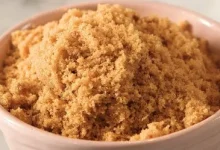Discover the Proven Techniques for Repairing Your Cracked Jeep Hardtop
Discover the Proven Techniques for Repairing Your Cracked Jeep Hardtop

When it comes to owning a Jeep, there’s nothing quite as frustrating as discovering a crack in your hardtop. Not only does it compromise the overall appearance of your vehicle, but it can also lead to leaks and further damage if left untreated. Luckily, there are proven techniques that can help you repair your cracked Jeep hardtop and get back on the road in no time.
One of the most effective methods for repairing a cracked hardtop is using fiberglass resin. This involves cleaning the area around the crack thoroughly, sanding it down to create a smooth surface, and applying several layers of fiberglass cloth soaked in resin. Once dry, you can sand down any rough edges and paint over the repaired area to match your Jeep’s color. Another technique involves using adhesive sealant Repair Jeep Car.
Understanding the common issues with Jeep hardtops
If you own a Jeep with a hardtop, you may have experienced the frustration of dealing with cracks and damage. Understanding the common issues that plague Jeep hardtops is crucial in order to effectively repair them. One of the most common problems is cracking, which can occur due to various reasons such as age, weather exposure, or improper installation. These cracks not only affect the aesthetic appeal of your vehicle but also compromise its structural integrity.
To repair your cracked Jeep hardtop, it is essential to follow proven techniques that ensure long-lasting results. Firstly, start by thoroughly cleaning the damaged area and removing any loose debris or dirt. Next, assess the severity of the crack and determine whether it can be fixed through a simple repair or if a replacement is necessary. For smaller cracks, applying epoxy resin mixed with fiberglass strands can provide sufficient strength and stability.
Identifying the extent of the damage
The first step in repairing a cracked Jeep hardtop is identifying the extent of the damage. Begin by thoroughly inspecting the crack, noting its size and location. A small crack near an edge may be easily repaired using adhesive or epoxy, while a larger crack that extends across the surface may require more extensive repairs. It is important to carefully assess the stability of the hardtop as well; if there are any signs of significant structural damage, it may need to be replaced entirely.
Once you have determined the severity of the crack, you can begin preparing for repairs. Clean the surface surrounding the crack with soap and water to remove any dirt or debris that could interfere with adhesion. Next, use sandpaper to roughen up both sides of the crack, creating a better surface for adhesives or fillers to bond with.
Preparing the cracked area for repair
Discovering the proven techniques for repairing your cracked Jeep hardtop is essential to ensuring its longevity and functionality. One crucial step in this process is preparing the cracked area for repair. To begin, thoroughly clean the damaged section using a mild detergent and water solution to remove any dirt or debris that may hinder bonding. Next, use a degreaser to eliminate any oils or waxes that could prevent proper adhesion of the repair materials.
After cleaning, carefully sand down the cracked area using fine-grit sandpaper to create a rough surface for better adhesion. Be sure to feather out the edges of the crack to ensure a smooth and seamless finish once repaired. Once sanded, wipe away any dust or particles with a clean cloth before moving on to priming. Priming is vital as it helps promote adhesion between the hardtop material and the repair compound.
Applying the appropriate repair method
Discovering the appropriate repair methods for your cracked Jeep hardtop is essential to ensuring its longevity. Whether you’re dealing with a small crack or a more significant damage, applying the right techniques can help you restore your hardtop’s functionality and appearance. One proven technique is using fiberglass cloth and resin to patch up the cracks. This method involves cleaning the damaged area, cutting out a piece of fiberglass cloth slightly larger than the crack, and applying several layers of resin on top until it is fully covered. Once the resin has cured, sanding and painting may be necessary to blend in the repaired spot seamlessly.
Another effective technique for repairing cracked Jeep hardtops is using an adhesive sealant specifically designed for automotive applications. These sealants are often made of durable materials such as silicone or polyurethane that provide excellent adhesion and flexibility.
Finalizing the repair and ensuring durability
Finalizing the repair and ensuring durability are two crucial aspects to consider when repairing your cracked Jeep hardtop. A cracked hardtop not only affects the aesthetic appeal of your vehicle but can also compromise its structural integrity. With a few proven techniques, you can restore your hardtop to its original condition and ensure it withstands daily wear and tear.
To finalize the repair effectively, start by thoroughly cleaning the surface around the crack using a mild detergent or automotive cleaner. This will remove any dirt, grease, or debris that could hinder proper adhesion of the repair materials. Next, carefully inspect the extent of damage to determine whether a simple patch-up job will suffice or if more comprehensive repairs are necessary. Using high-quality epoxy resin specifically designed for automotive applications, fill in the cracks evenly and smoothly.
Preventive measures to avoid future cracks
Has your beloved Jeep hardtop seen better days? Don’t worry, we’ve got you covered with the proven techniques for repairing those annoying cracks. But before we delve into the solutions, let’s talk about prevention. Taking preventive measures is crucial to avoid future cracks and ensure the longevity of your Jeep hardtop.
Firstly, regular inspections are key. Keep an eye out for any signs of wear and tear, such as small hairline fractures or weak spots on the surface. By catching these issues early on, you can address them before they worsen and lead to bigger problems down the road. Secondly, consider investing in protective coatings or sealants specifically designed for hardtops. These products create a barrier that shields against environmental elements like UV rays and harsh weather conditions that can cause cracking over time.









